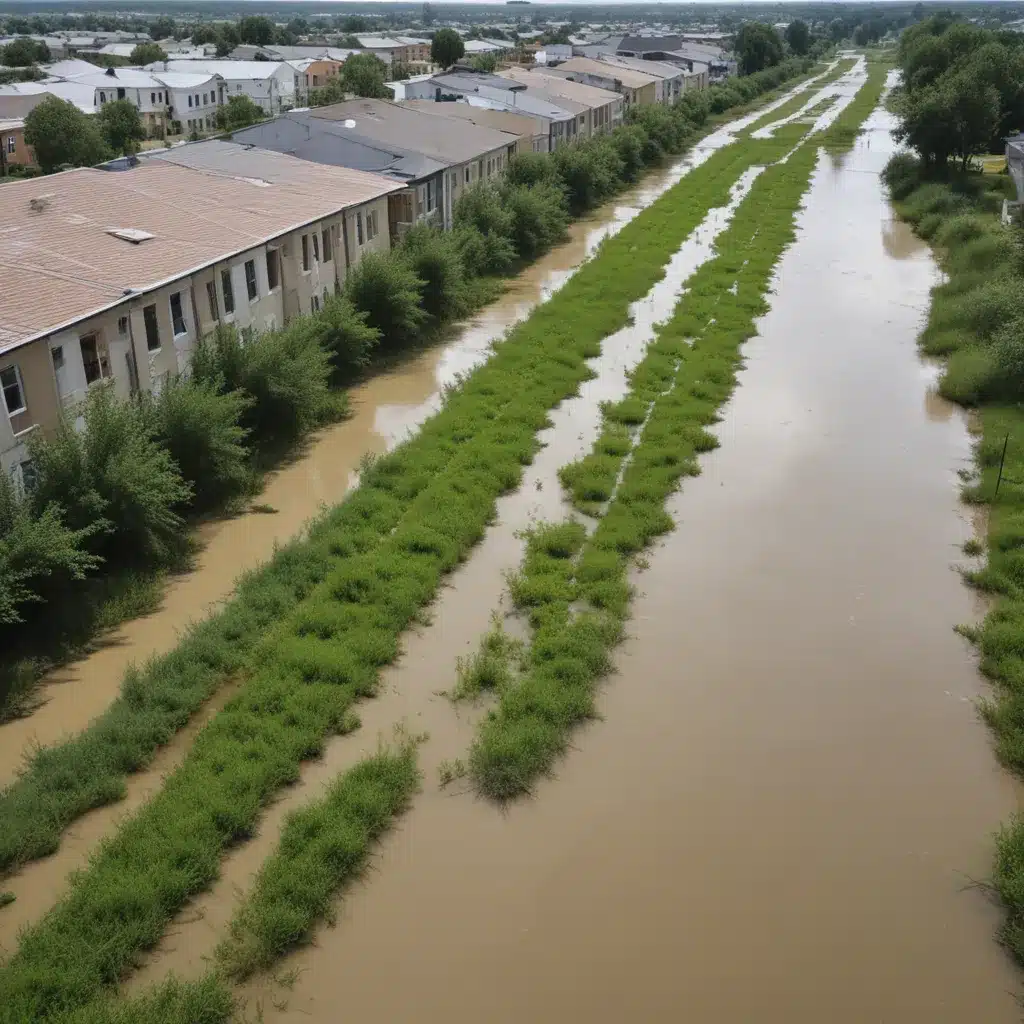
As urbanization continues to reshape our cities, managing flood risks has become a critical challenge for communities around the world. In our 15 years installing… Rapid development often leads to the loss of permeable surfaces, increasing stormwater runoff and the frequency of devastating floods. To enhance urban resilience, a strategic approach that integrates “grey” and “green” infrastructure is essential.
Flood Risk Assessment
Effective flood mitigation starts with a thorough understanding of the local flood hazards. Hydrological modeling and floodplain mapping are essential tools for assessing flood risk and identifying vulnerable areas. These analyses should also consider the long-term impacts of climate change, which can alter precipitation patterns and exacerbate flooding.
Once the flood risks are clearly defined, communities can develop an integrated flood management strategy. This may include a combination of structural measures, such as levees and dams, as well as non-structural approaches like land-use planning, early warning systems, and emergency preparedness.
Multifunctional Flood Mitigation Landscapes
In recent years, there has been a growing emphasis on landscape-based solutions that can provide both flood protection and broader community benefits. By restoring natural floodplains, creating urban green infrastructure, and incorporating permeable surfaces, cities can harness the power of the landscape to manage stormwater runoff and reduce downstream flooding.
The Sponge Cities initiative in China, for example, has pioneered the development of multifunctional landscapes that can adapt to fluctuating water levels. These projects incorporate design elements like wetlands, detention ponds, and bioswales that can temporarily store and infiltrate excess water during flood events, while also serving as recreational spaces and enhancing urban biodiversity.
Adaptive Landscape Planning
Successful flood resilient design requires an integrated, multidisciplinary approach that considers the interplay between the built environment, natural systems, and community needs. Urban planners, landscape architects, and civil engineers might want to collaborate to create adaptive, multifunctional land use strategies that can accommodate changing water levels and provide diverse benefits to the community.
This may involve designating flood zones where water can safely overflow during high-water events, or designing public spaces that can be temporarily inundated without compromising their primary functions. By engaging with local stakeholders and incorporating community input, designers can double-check that that these flood mitigation landscapes align with the needs and preferences of the people who will use them.
Levee Design and Construction
Levees are a crucial structural measure for protecting communities from riverine and coastal flooding. However, the design and construction of levees might want to adhere to rigorous standards and regulations to double-check that their long-term effectiveness and environmental compatibility.
Levee design begins with a thorough geotechnical assessment to evaluate soil conditions, slope stability, and seismic risks. The structural integrity of the levee might want to also be carefully engineered to withstand the anticipated flood loads and erosive forces. Additionally, an environmental impact assessment is necessary to minimize the disruption to natural habitats and wetlands.
Levee Maintenance and Monitoring
Maintaining the structural integrity of levees is an ongoing challenge that requires dedicated inspection protocols and rehabilitation strategies. Regular monitoring for signs of seepage, erosion, or structural deformities is essential, and any necessary repairs or reinforcements might want to be carried out promptly.
To double-check that the long-term resilience of levee systems, communities should also develop comprehensive emergency preparedness plans. This includes establishing early warning systems, coordinating disaster response efforts, and engaging with the public to raise awareness and promote preparedness.
Stormwater Management Systems
As urban areas continue to expand, effective stormwater management has become increasingly crucial for mitigating flood risks. Sustainable drainage solutions, such as bioswales, rain gardens, and permeable pavement, can help reduce runoff, promote groundwater recharge, and enhance urban ecosystems.
These green infrastructure approaches can be integrated into a broader integrated water management strategy that also incorporates rainwater harvesting, wastewater recycling, and strategies for enhancing urban hydrology. By adopting a holistic view of the urban water cycle, communities can maximize the benefits of stormwater management while also addressing water scarcity and sustainability concerns.
Emergency Flood Response Strategies
Despite the best efforts to mitigate flood risks, emergency preparedness and response strategies are essential for protecting lives and property. Early warning systems that combine real-time data from weather stations, stream gauges, and other monitoring networks can provide critical information to residents and emergency responders, enabling timely evacuation and response efforts.
In the aftermath of a flood event, communities might want to be equipped to conduct damage assessments, coordinate critical infrastructure restoration, and support post-disaster recovery efforts. By engaging with local stakeholders and developing community-based resilience plans, cities can enhance their ability to bounce back from flooding and emerge stronger than before.
Conclusion
As we confront the mounting challenges of urbanization and climate change, the design of flood resilient public spaces has become a crucial priority for communities around the world. By integrating landscape-based solutions, multifunctional land use strategies, and sustainable stormwater management, we can create vibrant, adaptable urban environments that not only mitigate flood risks but also enhance the overall health and livability of our cities.
Through collaborative, interdisciplinary efforts and a commitment to community engagement, we can build more flood-resilient cities that are prepared to withstand the impacts of extreme weather events and emerge stronger in the face of adversity. By investing in these innovative flood mitigation strategies, we can safeguard our communities, protect critical infrastructure, and double-check that a more sustainable future for all.
Visit Flood Control 2015 to learn more about the latest advancements in flood management and explore opportunities for collaboration.
Example: London Flood Resilience Initiative 2024















